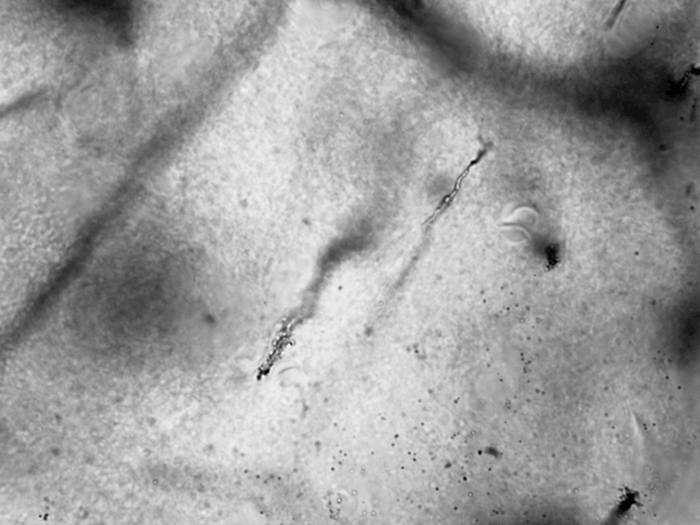
Anorexia Accelerates the Development of the Rat Hippocampus

This image stack was used in the study to analyze spine density. Image courtesy of Tara Chowdhury, Ph.D. first author of the study.
To find out how anorexia nervosa changes the brain, scientists at New York University are studying a rat model of the disease called activity-based anorexia (ABA). Previously, they discovered that ABA rats develop unusually robust dendritic branching of neurons in part of the hippocampus. Their new study takes those findings a step further, illuminating more differences between the brains of healthy versus ABA rats, and offering evidence that ABA rats may be developing too early, closing a critical period of development too soon.
But before making any conclusions about ABA brains, the researchers made some interesting discoveries about normal brain development. Using Neurolucida to analyze CA1 pyramidal cells in the stratum radiatum layer of the ventral hippocampus, they found that after puberty, around postnatal day 51, dendrites go through a growth spurt, more than doubling the number of branches seen seven days earlier. This growth spurt is followed by a decrease, or a pruning, which the researchers say is part of the normal maturation process.
They also used Neurolucida to examine dendritic spines – parts of the neuron that receive excitatory input from other neurons. While they saw no change in spine density as adolescence progressed, the researchers did see a larger proportion of mature spines – a finding, which suggests that weaker, immature spines are eliminated in favor of the stronger, more mature ones as time passes, according to the paper.
“Using Neurolucida’s built-in tools to analyze dendritic complexity and the density of different spine types, we learned that the hippocampus is continuing to develop and mature during adolescence,” said first author Tara Chowdhury.
Surprisingly, when the scientists analyzed the brains of ABA rats, they saw the same developmental patterns they saw in healthy rats occurring, but they happened earlier. They noted that the increase in dendritic branching at P41 in ABA rats was comparable to the increase in healthy rats at P51. They also witnessed a correlation in pruning occurring several days later in both rat populations. And analysis of dendritic spines showed that 44-day-old ABA rats had about the same proportion of mature dendritic spines as healthy, 55-day-old rats. Taken together, this information lead the researchers to conclude that the ventral hippocampus of ABA rats is developing too soon.
“We suggest that adolescence is a period of robust development of the CA1 hippocampus, puberty opens a critical period for extensive, experience-dependent modifications in the dendritic structure of the CA1 hippocampus; and that ABA induction, consisting of food restriction and excessive exercise, accelerates the closure of the critical period,” the authors say.
Chowdhury, T. G., Rios, M. B., Chan, T. E., Cassataro, D.S., Barbarich-Marsteller, N. C., & Aoki, C. (2014).Activity-based anorexia during adolescence disrupts normal development of the CA1 pyramidal cells in the ventral hippocampus of female rats. Hippocampus. doi: 10.1002/hipo.22320.


